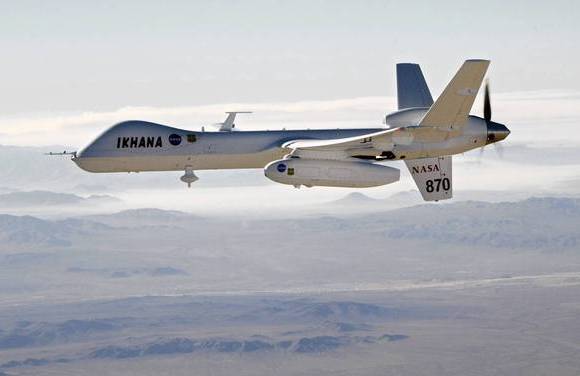WHENEVER a hiker gets lost in Mesa County, a rugged area in western Colorado, Benjamin Miller of the local police force does not bother to join the search on foot.
His department is a trailblazer in the use of unmanned aircraft, and he launches a drone equipped with an infrared camera to search from the skies. No wayward ramblers have been rescued in this way yet, but he hopes to find one soon.
Drones are best known for their role in the Afghan war, where they both monitor and strike at enemy forces. Now the Federal Aviation Administration has been ordered to find a way to integrate them into American airspace by 2015. The attraction of drones for domestic users is their ability to carry sensors, such as cameras and spectrometers, rather than weapons. This suggests they could be useful in commerce and research, as well as policing. Already scores of organisations have received special approval from the FAA to fly drones. Although there is no regularly updated master list in the public domain, organisations that have received permission range from universities in North Dakota and Michigan to the Departments of Agriculture and Energy. A number are police departments, and it is this development that is stirring up concerns about privacy and protests from local residents.
Their fears are centred on the prospect of surveillance. Since drones can be far cheaper to buy than helicopters--tens of thousands of dollars, as against a few million--the worry is that cameras will be sent up into the sky far more frequently. Even if they are not on a deliberate spy mission, they may capture incidental footage that leads to an investigation, such as evidence of marijuana plantations. Still, at least in Mesa County, the drones have been used for search and rescue efforts and photographing crime scenes. "We're not spying on everybody," says Mr Miller. "We haven't done a single surveillance mission."
In any case, it may not be so easy for a police department to perform round-the-clock surveillance. Their drones are much less sophisticated than military types like Predators, which can remain aloft for 40 hours at a height of 25,000 feet or 8,000 metres (although the Department of Homeland Security has purchased ten Reapers, a new version of the Predator, for border patrols.) The FAA specifies that drones used by public-safety agencies must weigh 4.4lb (2 kilograms) or less, which can be increased to 25lb if the operator is judged proficient. And they are governed by strict rules in the air. They cannot fly higher than 400 feet and must remain within the line of sight of the operator.
Some police forces, however, face obstacles. Florida lawmakers have proposed limiting their use in the state. And in Seattle, two drones that were bought in 2010 for police use have never gone into service. After a hullabaloo, the mayor announced that the programme was to be scrapped. It will soon be easier for police forces to have more eyes in the sky, but first they will have to win over a hostile public.

.jpg?width=600)
.jpg?width=600)
.jpg?width=600)
.jpg?width=600)
.jpg?width=600)
.jpg?width=600)



